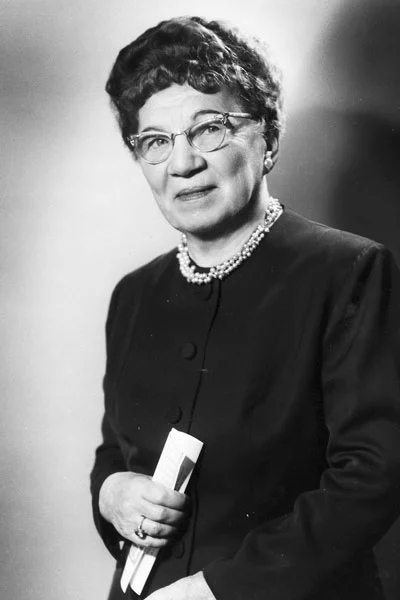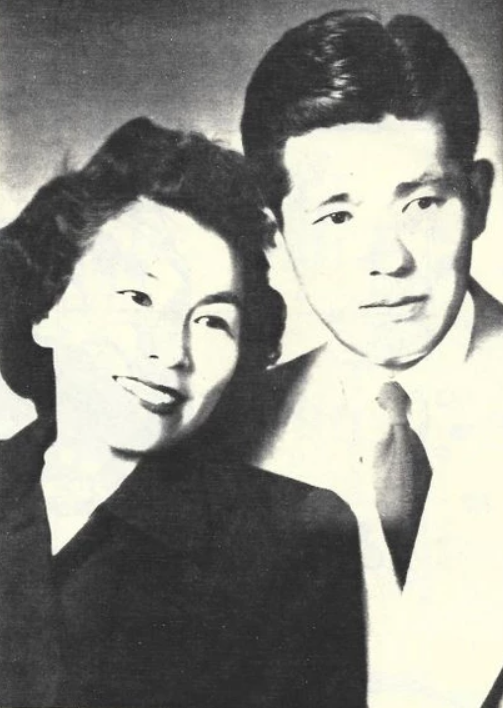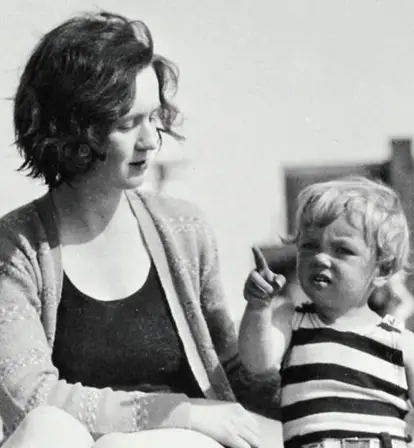Women's Mental Health - Rockhaven Sanitarium
Introduction
One can evaluate historical cultures by analyzing whether men or women control the power. Historically, most cultures are patriarchies, although women often assert power through inheritance (matrilineal), geography (matrilocal), and emphasis (matrifocal). For example, many indigenous cultures empowered themselves in aspects of religion, child-rearing, and property ownership. However, in the British United States women found themselves defined by “coverture,” the idea that before an adult woman married (feme sole), she had rights to go to court, inherit, buy and sell property, etc., but once married (feme covert) she lost her legal status as the couple became “one” and the man controlled his wife’s access to civil rights. He “owned” his wife, the children, property, and inheritance. This system existed for close to 1000 years and was codified in William Blackstone’s legal commentaries in the late 18th century.
This interpretation literally meant that the male head of household could commit a woman to a sanitarium or mental hospital for years; she effectively lost all recourse. Emotional or talkative women could be committed, as could women who took lovers. Depressed, menopausal, or mentally ill women landed in hospitals for hysterical females. In the worst-case scenario, a father or husband could have an adult woman undergo a surgery called a lobotomy, which resulted in severe personality changes as sections of the brain were severed from one another. Men could also sign to have women sterilized so they could not bear children. Lobotomy ceased to be an option in the western world in the 80’s but forced sterilization has been recorded in California as late as 2010.
Agnes Richards
 The marginalization of the female sex in the early 20th century was ubiquitous - women from different social classes, ethnic backgrounds, and personal belief were all expected to be demure and maintain a certain grace, never disturbing the status quo. The women who dared to traverse the periphery of what was expected of them were viewed as troublesome, and often were sent to sanitariums in an effort to reform their “eccentricities”. Psychiatric facilities had previously existed in the United States, but catered to the wealthy as they were usually just rooms in a doctor’s house that were converted to house mentally ill residents. Poorer individuals were simply treated at home by relatives. At the beginning of the 19th century however, larger institutions began to develop; mental illness was not as understood as it is today, so these hospitals quickly became overcrowded and understaffed resulting in gross mistreatment of the patients.
The marginalization of the female sex in the early 20th century was ubiquitous - women from different social classes, ethnic backgrounds, and personal belief were all expected to be demure and maintain a certain grace, never disturbing the status quo. The women who dared to traverse the periphery of what was expected of them were viewed as troublesome, and often were sent to sanitariums in an effort to reform their “eccentricities”. Psychiatric facilities had previously existed in the United States, but catered to the wealthy as they were usually just rooms in a doctor’s house that were converted to house mentally ill residents. Poorer individuals were simply treated at home by relatives. At the beginning of the 19th century however, larger institutions began to develop; mental illness was not as understood as it is today, so these hospitals quickly became overcrowded and understaffed resulting in gross mistreatment of the patients.
Agnes Richards was a nurse who had worked in these facilities and became intrinsically opposed to this inadequate standard of care. In 1923, she rented a cottage called the “Rock House” in Glendale, California, renovated it, and renamed it Rockhaven Sanitarium. Unlike the other facilities of the day, Rockhaven was a small enterprise run by women for women. In its first year of operation, Rockhaven housed six women- three years later, Rockhaven housed 25 “ladies” (the term “patients” was never used), suggesting the outstanding demand for a facility of this kind.
Agnes had served as a nurse during World War I and had witnessed the mental toll which the brutality of war could export on an individual. She was of the belief however that compassion and understanding were the two unfailing ways to cure mental ailments in both men and women. What makes Agnes unique is her equal treatment of both sexes - she understood that one did not have to fight in a war to be haunted by what lived in their mind; for women especially, Agnes and her facility offered a one-of-a-kind space for women to convalesce and recover without the burden of society.
This once flourishing sanctuary for women is currently under threat. Patricia Traviss, Agnes’ granddaughter, inherited the property when Agnes died in 1967; for many years, Patricia continued to uphold her grandmother’s values and care for women at Rockhaven until 2001 when she sold the facility to a large hospital corporation. Finding upkeep too cost prohibitive, Rockhaven was sold to condominium developers. After massive outpouring of community support, the City of Glendale actually purchased Rockhaven and intended to turn it into a historical site until a lack of spending money halted this project. Despite its current status in limbo, Rockhaven Sanitarium is an important facet of Southern California’s past. Agnes Richards was one of few who stepped up to aid women in a period when they faced extreme adversity. Though the number of women who spent time at Rockhaven Sanitarium is dwindling, Agnes’ contribution to the history of Glendale can still be seen and felt today.
Pictured: Agnes Richards portrait, image by KCET, https://www.kcet.org/shows/departures/rockhaven-l-a-s-first-feminist-sanitarium.
Tamaye Ishida Shigematsu
 The Rockhaven Sanitarium in Glendale, California was a remarkable institution when it first opened in 1923 - a convalescent home for mentally ill women exclusively that was run by women. The determined and courageous woman who spearheaded this facility was Agnes Richards, a former World War One nurse who saw the value in treating the mentally ill with tenderness in order to bring about their recovery. Richards and her institution were considered radical in the beginning, but as the 20th century progressed and the idea of mental health changed, Rockhaven changed as well and morphed into a care facility for women with memory deterioration.
The Rockhaven Sanitarium in Glendale, California was a remarkable institution when it first opened in 1923 - a convalescent home for mentally ill women exclusively that was run by women. The determined and courageous woman who spearheaded this facility was Agnes Richards, a former World War One nurse who saw the value in treating the mentally ill with tenderness in order to bring about their recovery. Richards and her institution were considered radical in the beginning, but as the 20th century progressed and the idea of mental health changed, Rockhaven changed as well and morphed into a care facility for women with memory deterioration.
Tamaye Ishida Shigematsu was one of the last ladies to reside at Rockhaven before it was officially closed in 2006. Her life before Rockhaven however was one filled with happiness, perseverance, and familial love. Tamaye was born in 1922 in Los Angeles and spent her early years helping with her fathers produce trucking company; her parents were Japanese immigrants and she was thus classified as Nisei, a term for second-generation Americans of Japanese descent. She attended Ninth Street Elementary School, Lafayette Junior High, and graduated from Jefferson High School. After Pearl Harbor was bombed by the Japanese in December of 1941, Tamaye, her parents, and two older brothers were interred in the Manzanar beginning in 1942. Although being persecuted and confined to the California desert was without doubt a harrowing experience for Tamaye, she did meet the love of her life, Joe Shigematsu, whilst interred. The couple married in 1943 in Lone Pine, a town neighboring Manzanar.
After her internment, Tamaye and Joe returned to Los Angeles and settled in Pasadena and later Boyle Heights where they owned and operated a successful liquor store. After twenty-four years of marriage and seventeen years of running their business, Joe passed away; despite the loss of her beloved husband, Tamaye continued to run the store on her own while additionally caring for her elderly parents who now lived with her.
Tamaye’s immeasurable love for her family never ceased. Her and Joe never had any children of their own, but she did maintain a very close relationship with her nieces and nephews, who affectionately called her “Auntie Ta”. When it became apparent to Tamaye’s family she was in the early stages of dementia, they decided to place her in the most reputable and trustworthy facility in the area - Rockhaven Sanitarium. When she first arrived, the caretakers at Rockhaven noticed Tamaye would walk the periphery of the fence surrounding the cluster of buildings, looking very upset. Only later did they realize her aging mind thought she found herself once again interned in the California desert. This confusion waned after a period of time, but the love Tamaye’s family had for her continued to wax - they would often take her on day trips or to local Japanese restaurants. Tamaye died in 2004, though her family would never forget their warm and loving Auntie Ta.
Pictured: Portrait of Tamaye Shimegatsu and her husband Joe.
Gladys Pearl Baker
 Mainstream depictions of mental illness of the 20th century present to modern audiences a series of half-truths - while certainly there were misunderstood aspects of afflictions of the mind, there were treatment options available to those who suffered from mental illness. However, sickness of the mind was still misunderstood, and psychiatric therapies were often less than effective. Rockhaven Sanitarium of Glendale, California was an exception and provided women experiencing mental malady with a safe, caring place to recuperate.
Mainstream depictions of mental illness of the 20th century present to modern audiences a series of half-truths - while certainly there were misunderstood aspects of afflictions of the mind, there were treatment options available to those who suffered from mental illness. However, sickness of the mind was still misunderstood, and psychiatric therapies were often less than effective. Rockhaven Sanitarium of Glendale, California was an exception and provided women experiencing mental malady with a safe, caring place to recuperate.
One woman who would find herself in Rockhaven Sanitarium was Gladys Pearl Baker. Originally Gladys Pearl Monroe, she was born to Otis and Della on May 27, 1902 in Mexico where her father worked on the railroad. By the time Gladys was six years old, her alcoholic father was suffering from dementia - he died in 1909 to great consternation to his wife and children who believed Otis died due to hereditary insanity. Della and Gladys moved to a boarding house in Venice Beach, California when she was fourteen. It was here that Gladys met Jasper Baker; Jasper quickly wooed Gladys and got her pregnant - in a scheme to retain her own freedom, Della forced the couple to marry and faked Gladys’ age on her birth certificate so the marriage would be legal. Gladys would have two children with Jasper, Robert “Jackie” and Berniece. Their marriage was not a happy one, and Jasper was physically abusive to Gladys and kidnapped her children in 1922 after she filed for divorce. Custody laws at that time favored the father and Gladys was permanently separated from her children. Devastated, Gladys moved to Los Angeles.
Gladys worked as a film cutter during the day and lived the life of a flapper at night. In 1924, Gladys married Martin Edward Mortensen. They immediately separated, and Gladys resumed her flapper lifestyle. In 1925, Gladys began dating Charles Stanley Gifford - in December, Gladys discovered she was again pregnant with Charles’ child to his dismay. Charles left Los Angeles, leaving Gladys alone to give birth to their child on June 1, 1926, a girl christened Norma Jean Mortensen (to avoid stigma, Gladys used her married name).
Gladys would hardly ever come to know Norma Jean who was placed with foster parents less than two weeks after her birth. Gladys did visit Norma Jean often and lived with her at one point, but in 1935 Gladys suffered a complete mental breakdown, resulting in a maternal bond never forming. Gladys was diagnosed with paranoid schizophrenia and moved from hospital to hospital for several years until her daughter Norma Jean (now famous using the moniker Marliyn Monroe) paid to house her mother in Rockhaven Sanitarium in 1953.
It is unsure whether or not Marilyn ever visited Rockhaven, but it is very unlikely. Gladys would live at Rockhaven until 1966 when it was clear that she was too high risk to live in a low supervision facility as Rockhaven was (she had tried to commit suicide twice at this point). Gladys was transferred to a hospital in Florida and died in 1984, her daughter Berneice by her side. Though Gladys’ life was surrounded by mental illness, she strove to be a good mother and care for her children. Though her relationship with Marilyn was strained, Marilyn’s desire to house her in such a respectable facility like Rockhaven shows that the bond between mother and child is never truly broken.
Pictured: Norma Jean Baker around the age of 3, with her mother, Gladys, from Silver Screen Collection/Hulton Archive/Getty Images, https://www.biography.com/news/marilyn-monroe-family-genealogy
Lesson Plans
To better understand the biographies we have provided, and to contextualize the field trips to the historical sites, a series of lesson plans have been provided for the use of students and faculty. They may be read online, downloaded, and printed as needed.
Understanding the Past
Click here to download "Women in Asylums" lesson plan.
Applying to the Present
Click here to download "Female Prison Sterilization" lesson plan.